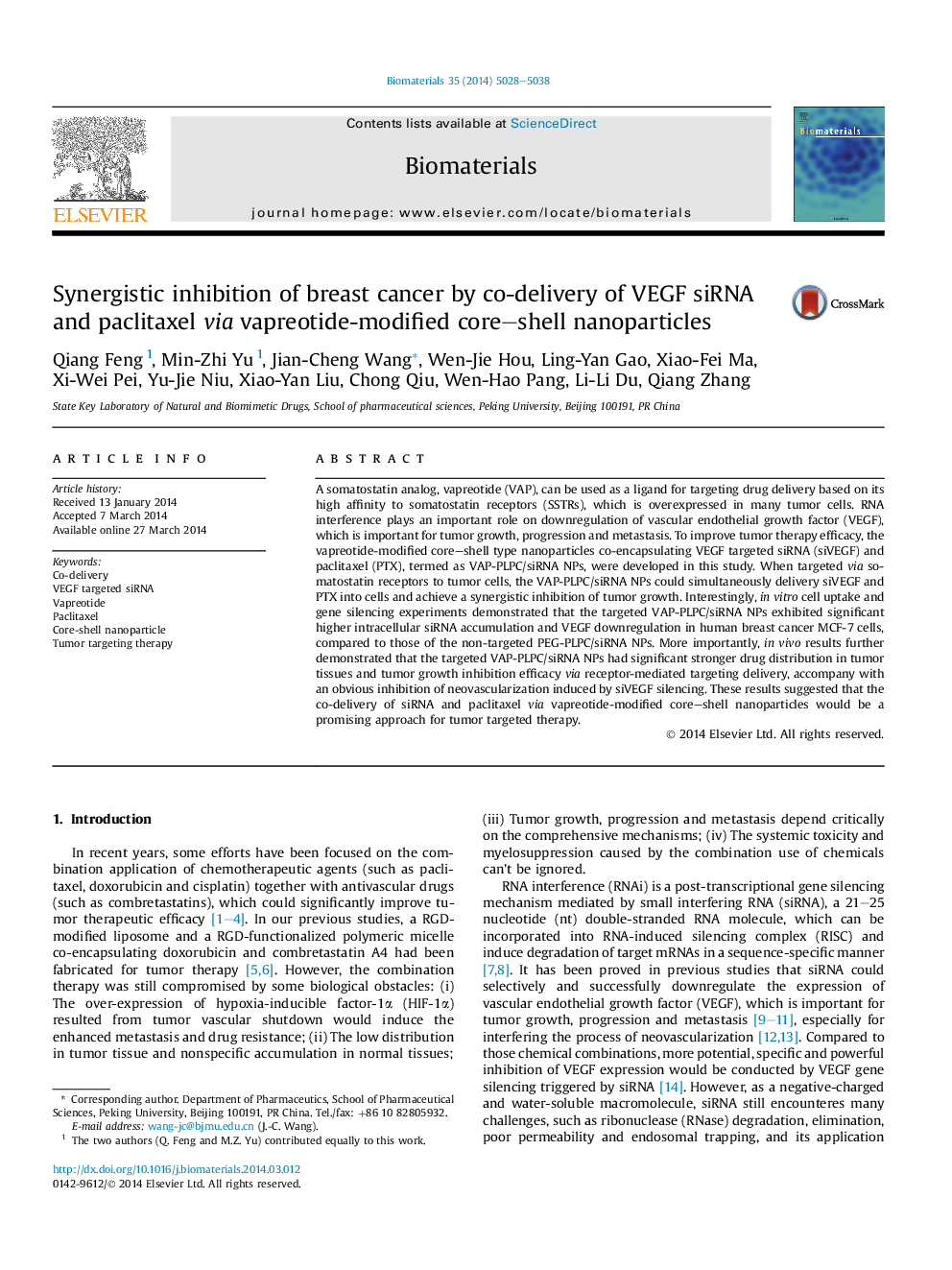| Article ID | Journal | Published Year | Pages | File Type |
|---|---|---|---|---|
| 6187 | Biomaterials | 2014 | 11 Pages |
A somatostatin analog, vapreotide (VAP), can be used as a ligand for targeting drug delivery based on its high affinity to somatostatin receptors (SSTRs), which is overexpressed in many tumor cells. RNA interference plays an important role on downregulation of vascular endothelial growth factor (VEGF), which is important for tumor growth, progression and metastasis. To improve tumor therapy efficacy, the vapreotide-modified core–shell type nanoparticles co-encapsulating VEGF targeted siRNA (siVEGF) and paclitaxel (PTX), termed as VAP-PLPC/siRNA NPs, were developed in this study. When targeted via somatostatin receptors to tumor cells, the VAP-PLPC/siRNA NPs could simultaneously delivery siVEGF and PTX into cells and achieve a synergistic inhibition of tumor growth. Interestingly, in vitro cell uptake and gene silencing experiments demonstrated that the targeted VAP-PLPC/siRNA NPs exhibited significant higher intracellular siRNA accumulation and VEGF downregulation in human breast cancer MCF-7 cells, compared to those of the non-targeted PEG-PLPC/siRNA NPs. More importantly, in vivo results further demonstrated that the targeted VAP-PLPC/siRNA NPs had significant stronger drug distribution in tumor tissues and tumor growth inhibition efficacy via receptor-mediated targeting delivery, accompany with an obvious inhibition of neovascularization induced by siVEGF silencing. These results suggested that the co-delivery of siRNA and paclitaxel via vapreotide-modified core–shell nanoparticles would be a promising approach for tumor targeted therapy.
